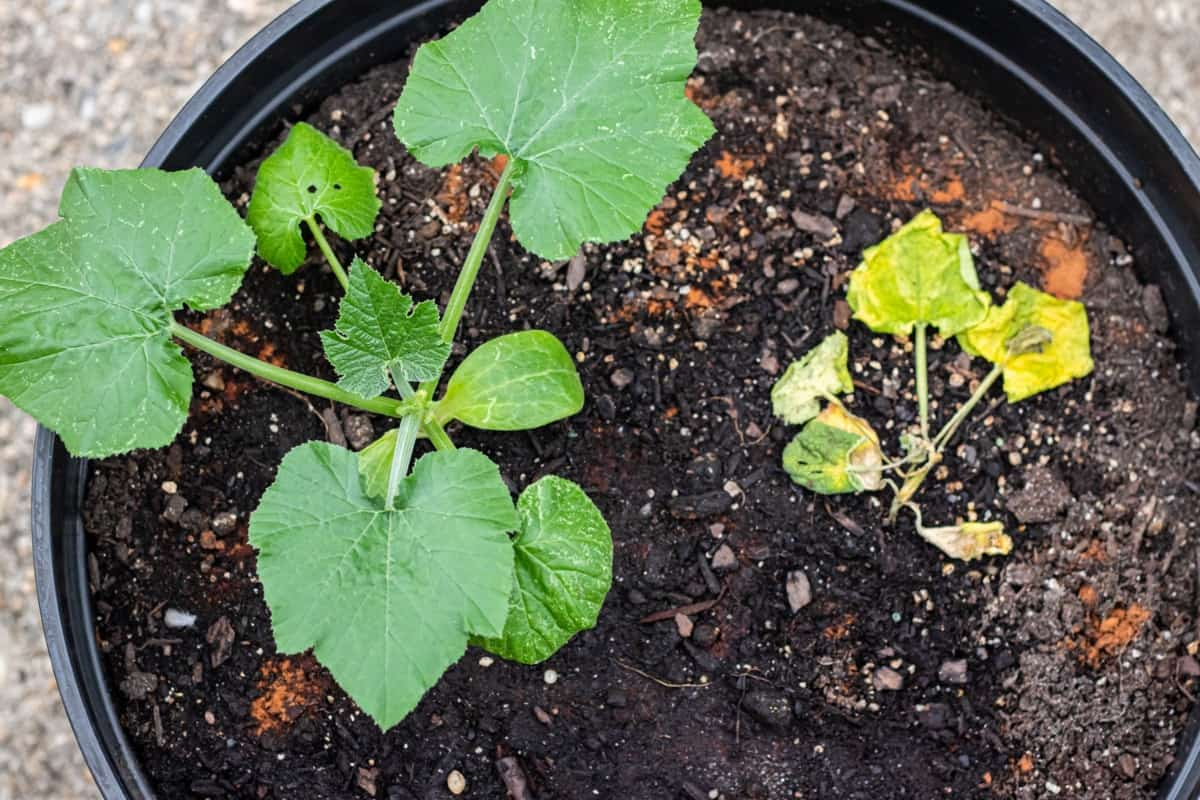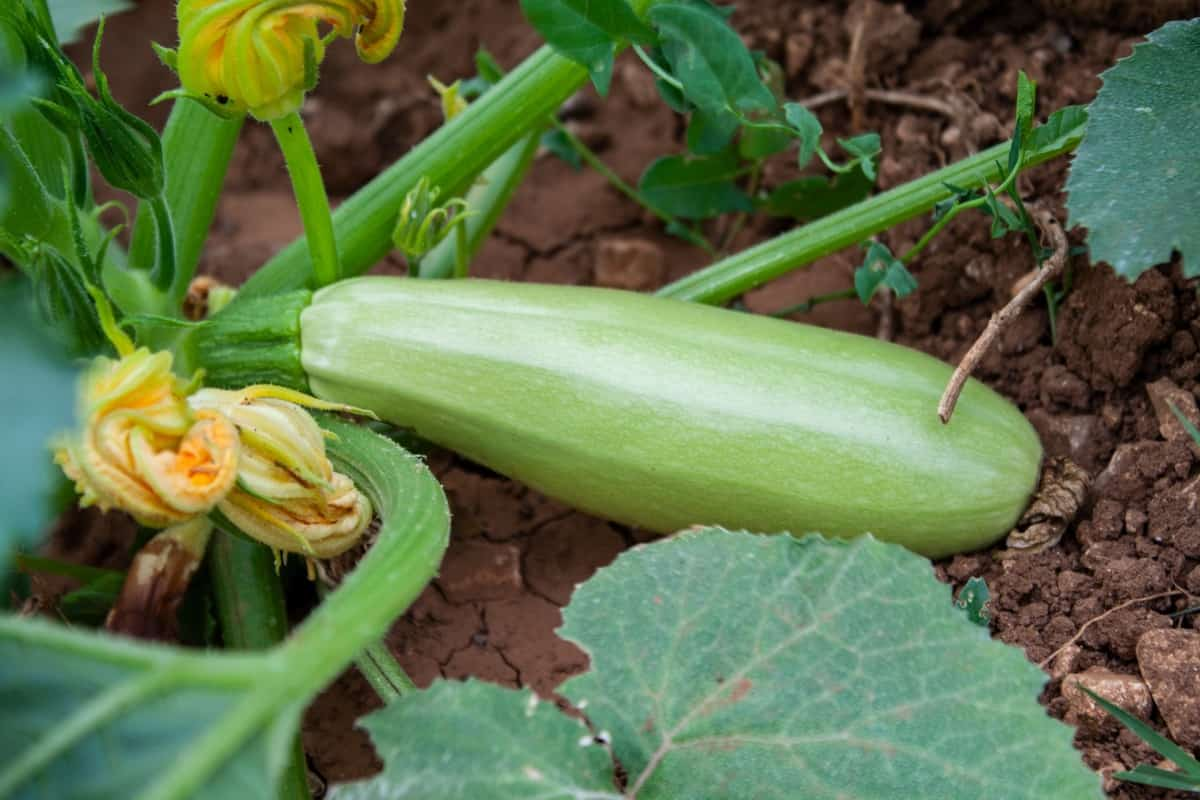Zucchini, a favored vegetable among home gardeners, is a versatile and widely-used ingredient in diverse culinary preparations. Despite their relative ease of growth, zucchini plants are prone to several problems that can reduce their productivity and overall health. From yellowing leaves to dying fruits, these problems can cause frustration and disappointment for any gardener. Identifying these issues early on and knowing how to treat them effectively is crucial in maintaining the vitality of your zucchini plants.

10 Common Problems With Zucchini Plants
Yellowing Leaves on Zucchini Plants and Nutrient Deficiencies
One common problem that zucchini growers frequently encounter is the yellowing of leaves. This can occur due to several reasons. The first of which is nutrient deficiencies. Zucchini plants need various nutrients to grow and produce fruit, including nitrogen, phosphorus, and potassium. When they lack one or more of these, it may result in yellowing leaves. In particular, a nitrogen deficiency can cause leaves to turn yellow, starting with the older, lower leaves.
Similarly, a lack of potassium may result in yellow spots or edges on the leaves. To remedy this issue, it is recommended to use a well-balanced organic fertilizer, ensuring your plants receive a steady supply of these essential nutrients. Why are my zucchini turning yellow and rotting, you may ask. This yellowing could also be a symptom of overwatering or a fungal disease, which will be discussed later in the article.
In case you missed it: How to Identify and Treat Zucchini Diseases: Control and Prevention

Powdery Mildew Affecting Zucchini Plants
Another significant problem zucchini growers often face is powdery mildew, which manifests as a white, powdery coating on leaves and stems. This fungal disease thrives in humid conditions and can be particularly problematic for zucchini growing in containers. It hampers photosynthesis, causing the leaves to turn yellow and die prematurely.
The result is a weakened plant with reduced fruit production. Over time, if left untreated, the entire plant could succumb to this disease. One way to prevent this is to ensure good airflow around your plants by proper spacing and regular pruning of dense foliage. Applying a water and baking soda mixture onto the foliage can serve as a potent household remedy.
Pests Infesting Zucchini Plants and Organic Control Methods
Pests are a significant threat to zucchini plants, with aphids, squash bugs, and cucumber beetles being some of the most common culprits. These pests can cause substantial damage to your plants, leading to issues such as zucchini leaf problems or even the death of your plants before they mature.
Organic control methods include introducing beneficial insects like ladybugs and lacewings that are natural predators of these pests. An alternative approach involves the utilization of organic insecticidal soaps or oils, which can be applied via spraying onto the targeted pests. Regularly inspect your plants to catch these pests early before they can cause significant harm.
Zucchini Plants With Poor Fruit Set or Blossom Drop
It is not uncommon for zucchini plants to have issues with poor fruit set or blossom drop. This is typically due to a lack of pollination. Zucchini plants possess distinct male and female flowers, necessitating the transfer of pollen from the male flowers to the female flowers in order to facilitate fruit development.
In case you missed it: Frequently Asked Questions About Growing Zucchini from Seed to Harvest

This process usually happens with the help of insects, but when these are scarce or when the weather is too hot or too cold, pollination may not occur. A solution to this is hand-pollination using a small paintbrush. Another cause could be extreme temperature swings or insufficient water, which can stress the plant and cause blossoms to drop.
Overwatering Zucchini Plants and Root Rot Issues
Overwatering is a common issue that leads to numerous problems, including yellowing leaves and root rot. Overwatered zucchini plants may become waterlogged, and their roots may not receive enough oxygen, causing them to rot. This phenomenon may lead to plant dehydration and fruit deterioration. To avoid this, it is important to water your plants only when the top layer of soil is dry. Well-draining soil, especially in container gardening, can prevent waterlogging and provide an environment conducive to healthy root growth.
Zucchini Plants With Stunted Growth and Nutrient Imbalances
Stunted growth in zucchini plants often results from nutrient imbalances in the soil. Zucchini requires a well-balanced soil rich in organic matter. Insufficient vital nutrients may result in stunted growth and reduced productivity. Apart from yellowing leaves, a deficiency in certain nutrients could lead to other signs like purpling leaves (phosphorus deficiency) or white spots on leaves (magnesium deficiency). Regular soil testing can help identify these imbalances and guide your fertilization practices. Organic matter, such as compost, can be added to the soil to enhance fertility and plant growth.
Vine Borers Damaging Zucchini Plants
Vine borers are pests that can cause significant damage to zucchini plants. They bore into the stems, eating the plant from the inside and causing wilting and eventual death. Early detection is key in managing these pests. Look for small holes at the base of your plant and a sawdust-like material, which are signs of a borer infestation. To address this problem, the application of beneficial nematodes or organic pesticides to the surrounding soil can be an effective solution.
Zucchini Plants Suffering From Sunburn or Heat Stress
Excessive heat or direct sunlight can cause sunburn or heat stress in zucchini plants. Symptoms include wilting, drying, or browning of leaves. While zucchini plants need plenty of sunlight to grow, too much can be harmful, especially in extremely hot climates. Providing shade during the hottest part of the day or using a shade cloth can help protect your plants. Also, maintaining adequate soil moisture can help your plants withstand heat stress.
Fungal Diseases in Zucchini Plants and Preventive Measures
Apart from powdery mildew, zucchini plants can be affected by several other fungal diseases. This includes root rot, which can result from overwatering, anthracnose, and downy mildew. These diseases can cause symptoms such as leaf spots, wilting, and fruit rot. The key to managing these diseases lies in prevention. This includes crop rotation, removal of infected plant material, and proper watering to avoid creating favorable conditions for fungal growth.
In case you missed it: How to Increase Female Flowers in Zucchini: Explained in 10 Simple Steps

Zucchini Plants With Deformed or Malformed Fruits
Finally, many gardeners question why their zucchini fruits are deformed or malformed. This can be due to incomplete pollination, where only part of the flower gets fertilized, leading to uneven growth. It could also result from pests or diseases damaging the developing fruit. Regularly monitoring your plants and maintaining healthy growing conditions can help avoid this problem.
Conclusion
Although zucchini plants may encounter various issues throughout their growth cycle, these can be managed with early detection and appropriate interventions.
- Ultimate Guide to Ossabaw Island Hog: Breeding, Raising, Diet, and Care
- Ultimate Guide to Juliana Pig: Raising Facts, Size, Diet, Care, and Lifespan
- Raising Lleyn Sheep: Disadvantages, Price, Uses, Characteristics, and Care
- Ultimate Guide to Meishan Pig: Breed Facts, Breeding, Raising, and Care
- Ultimate Guide to Teacup Pigs: Raising, Diet, Lifespan, Cost, and Care
- Guide to Raising Poll Dorset Sheep: Facts, Profile, Characteristics, Uses, and Care
- Ultimate Guide to Bighorn Sheep: Characteristics, Diet, Lifespan, Breeding, and Lifecycle
- Ultimate Guide to Raising Katahdin Sheep: Farming Facts, Breed Profile, Uses, and Care
- Ultimate Guide to Raising Oreo Cows: Belted Galloways Farming Facts, Profile, Uses, and Care